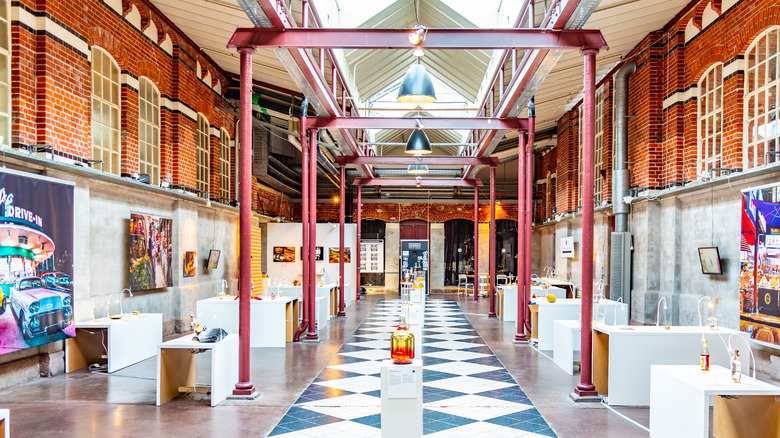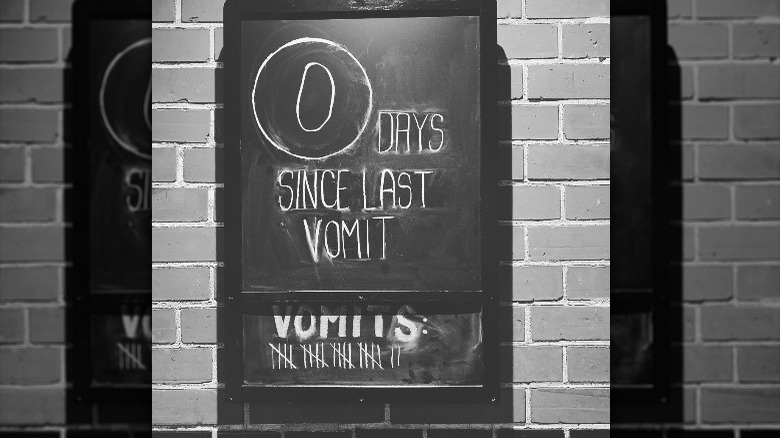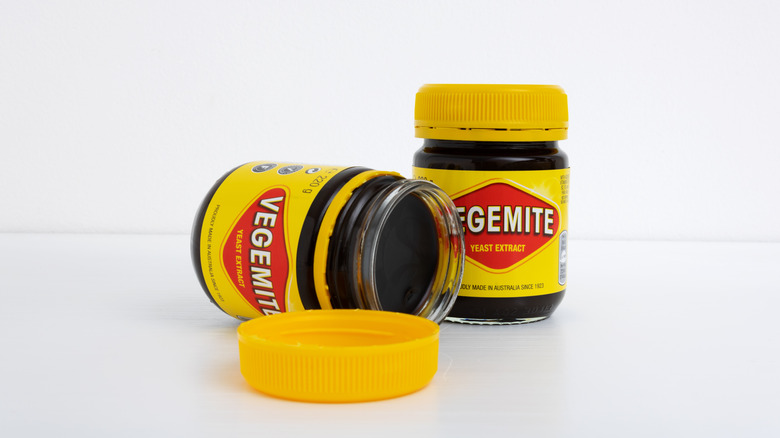This Museum In Sweden Is Dedicated To 'Disgusting Food'
It boasts of having dishes and beverages you're not likely to find anywhere but in their respective home countries, and we're talking dishes like mouse wine. Fruit bat soup. Kale Pache and haggis. And these are just some of the exhibits on show at the Disgusting Food Museum, located in Malmö, Sweden. The museum has a display of 80 different food and beverages, a number of which seem to turn the stomachs of many who visit: Visitors are even issued tickets that double as sick bags. A notice board onsite helpfully tells the curious how many days it has been "since the last vomit." The Economist reports that the board even features an updated list of just how many have lost the contents of their stomach since the museum first opened its doors in 2018. A Belgian journalist who took the plunge threw up no less than ten times.
No surprises there, since the museum displays treats like Surströmming — Sweden's infamous canned fermented herring; roasted guinea pigs known as cuy; and Sardinian casu marzu — or maggot-infested sheep's milk — which is banned in the rest of Italy, as well as across the European Union (via Disgusting Food Museum). There's also the Mongolian Mary, rumored to be Genghis Khan's hangover cure, made with tomato juice and pickled sheep eyeballs. While the establishment's name labels these as "disgusting," the museum's goal is deeper than you may expect.
The Disgusting Food Museum began as a pop-up exhibition
The Disgusting Food Museum started out quite modestly when it first opened its doors in 2018. As The New York Times reported, it was meant to be a pop-up between October 31 and January 31. But the museum, now housed in an old slaughterhouse named Slaghuset, was so popular it stayed put. The exhibition has also had pop-ups in Los Angeles, Nantes, and Bordeaux, as well as one currently open in Berlin (via Disgusting Food Museum).
In order to decide which foods would make the cut, museum director Andreas Ahrens says a group of judges were given 250 different foods and asked to make their selections using four categories: taste, smell, texture, and a fourth the New York Times referred to as "background." One example, per the Times, involves "how an animal is treated in the making of a dish."
Because "disgusting" is subjective, it should come as no surprise then that the exhibit has come under criticism for some of its choices, which include French escargots, Scottish haggis, Australian Vegemite, Spam, Filipino balut, Chinese century eggs. Twinkies, root beer, and Pop-Tarts share the stage with durian, stinky tofu, and hákarl (via ABC) — a dish the late Anthony Bourdain called "the single worst, most disgusting and terrible-tasting thing," per The Economist.
The museum wants people to question their biases
But as The Economist points out, the Disgusting Food Museum was not set up to belittle the different stuff people around the world consider to be food; its mission goes much further than that. Lund University food anthropologist Hakan Johnsson pointed out to The New York Times, "Disgust is the result of a combination of biological and cultural factors. And when it comes to food, it is most often impossible to define what is biology and what is culture. You can say that something is disgusting — but only from the individual's point of view."
And because disgust can be influenced by upbringing, there is the hope that they are able to overcome it, and to give in to the possibility of new experiences. "Our aim," Ahrens says, "is to open people's minds." Judging from some of the visitors comments, the museum is succeeding. One reviewer wrote, "Definitely an eye-opening experience. You can find many extreme food samples from all over the world and even get to try them at the end of the tour. Seeing the variety on the different food styles of different cultures melts your food biases away and raises respect to different tastes." Maybe the museum will even inspire you to sample some Vegemite.


